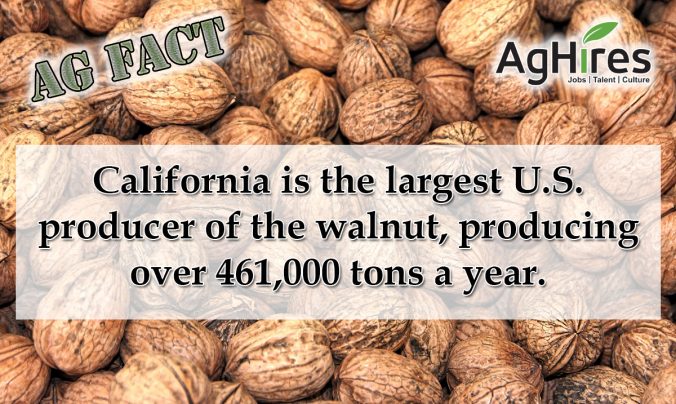
If you’re a lover of walnuts, either as a snack, in your dessert, or in your salad, May 18th is a day to celebrate. It’s National Walnut day! The average American consumes 2.5 million tons of the nut each year, so you’re not alone in your love.
History
Walnuts are one of the known oldest tree foods, dating back to 7000 B.C. History suggests that English Walnuts came from Persia and were set aside for royalty. The nuts were traded on the Silk Road between Asia and the Middle east. They then made their way across the globe through trades. Since English merchant marines transported the popular nut they became known as English Walnuts, even though England never produced them commercially.
Joseph Sexton planted the first commercial walnut trees in California in 1867. While majority of the trees were grown in Southern California in the beginning, today Central Valley California is now the prime growing area. This is thanks to the mild climate and deep fertile soils to provide the perfect growing conditions. California is the largest U.S. producer of the walnut, producing over 461,000 tons a year. The state accounts for 99% of the commercial supply in the U.S. and three-fourths of the world trade.
Harvesting and Processing
It can take a sapling up to 7 years to begin producing fruit. When they become an adult harvesting will begin. Walnuts are harvested beginning in late August until late November, when the green halls are splitting. After the orchard is swept clean, mechanical shakers vigorously shake the trees causing the thousands of nuts to fall. The nuts are then swept into windrows so that harvesters can pick them up for cleaning. After being harvested, the green husk is removed, and the nut is dehydrated by machine to 8% moisture level.
The nuts will then be transported to packing plants to be divided into inshell and shelled markets. Shelled walnuts will have their shells mechanically removed, then the kernels are sorted by size, color, etc. Inshell walnuts are separated by size.
Want more Agriculture Facts? Click here
Follow us on Facebook and Twitter to get your weekly dose of Ag Facts.
Sources:
Agricultural Marketing Resource Center
Walnuts.org
Central Valley Walnuts





